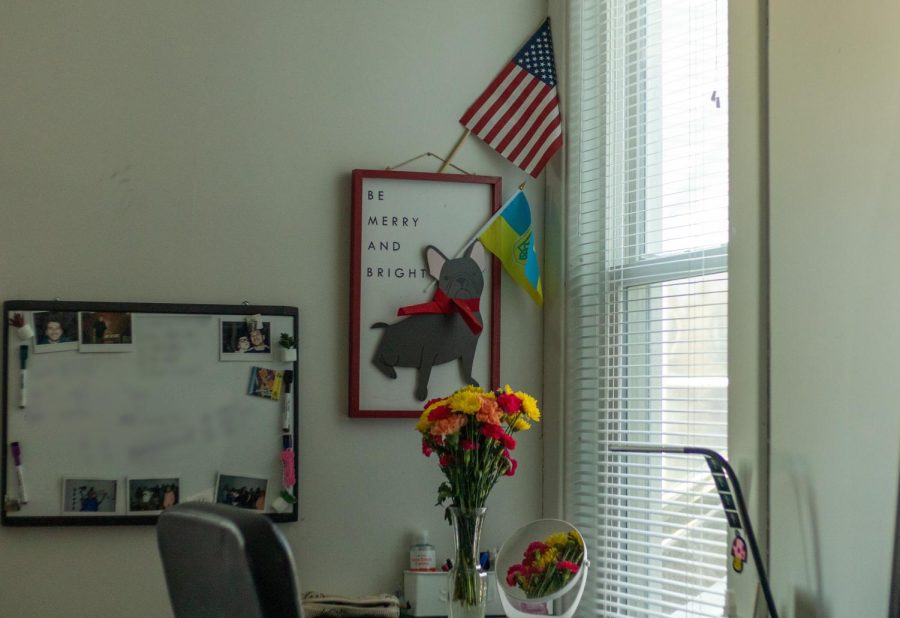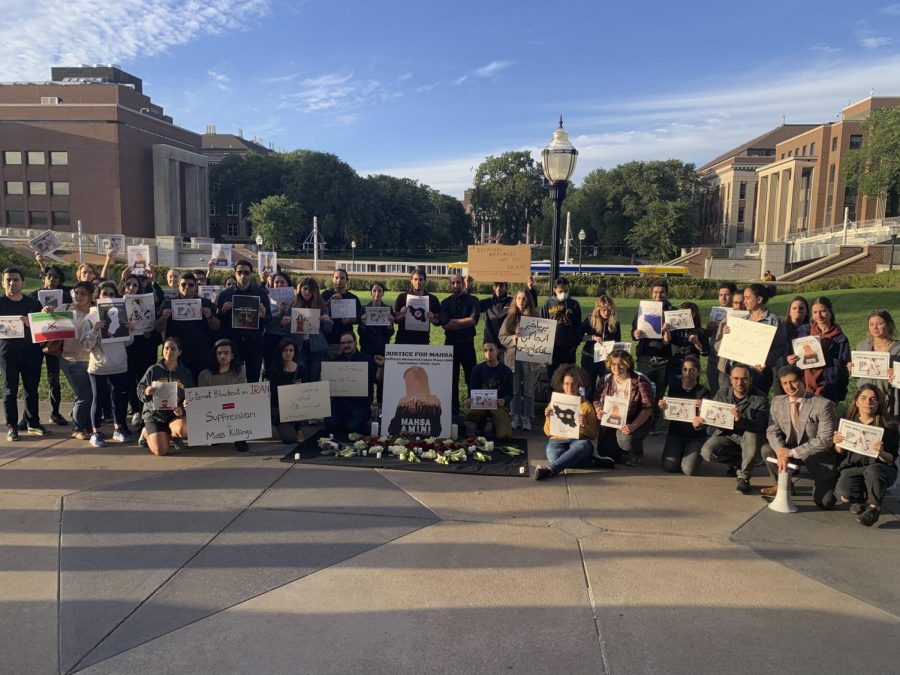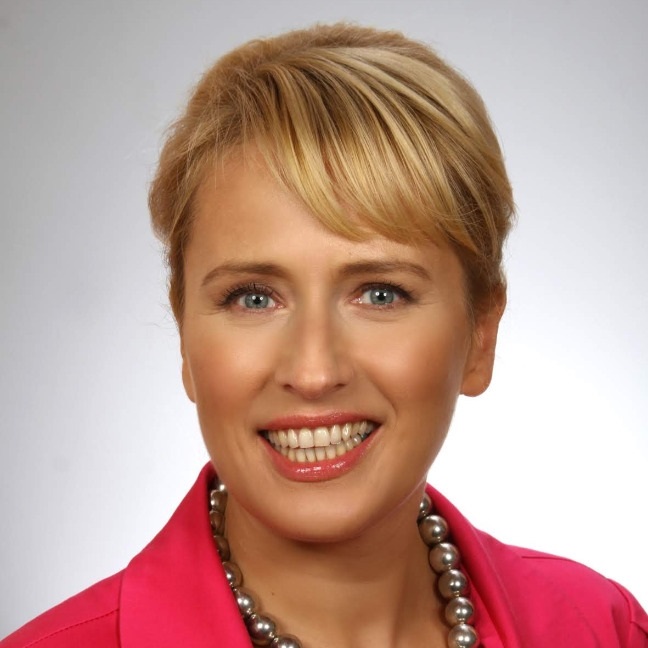WBy Libby George and Andrew Pritchard
 hen the starship Enterprise made its first voyage on network television, it carried something truly futuristic on its bridge: Nichelle Nichols as the ship’s black communications officer.
hen the starship Enterprise made its first voyage on network television, it carried something truly futuristic on its bridge: Nichelle Nichols as the ship’s black communications officer.
Network affiliates cringed, the public took notice and Martin Luther King Jr. encouraged his children to watch pop culture’s daring preview of a professional black woman in a position of authority.
After years of battling to get their fair share, minorities and women are now finding that many companies are not only receptive to their applications, but are actively recruiting them for internship positions.
“Ultimately we want a workforce that reflects the community we are in,” said Kenneth Charles, director of university relations at General Mills.
“The driver is we want people who are going to be successful at General Mills and are going to be able to make a contribution,” he said.
Although Charles said General Mills does not give minority candidates extra consideration once they apply, he said they work with groups on campus to ensure minority candidates are aware of the opportunities.
“We do partner with (minority groups) to do particular events so they know about the opportunities we have available,” Charles said.
Vandana Patel, president of the Business Association for Multicultural Students, said companies often use the group as a resource to attract diverse candidates for internship and career programs.
“There are multiple companies Ö that are going through (hiring minorities) right now because companies are realizing it makes them look better if they are more diverse,” Patel said.
Patel said companies including General Mills, Wells Fargo, Prudential Financial, Target, Ecolabs, General Electric and Philip Morris have all spoken with the group to attract internship candidates, adding that these hiring processes are positive for candidates as well as companies.
“I think it’s a good, positive thing for the companies,” Patel said. “The competition is extremely high, and during this century, minorities are having equal power as the majorities.”
Maia Veal, the Society of Black Engineers’ Minnesota chapter president, said companies also use the society as a resource for internship candidates, which she said is an effective way to make sure their employee pool is also diverse.
“When you start at the internship level … that’s the best way to incorporate diversity as a whole into the company,” Veal said.
Ann Marie Gaus, workforce diversity manager for 3M, agreed with Patel and Veal and said that 3M is committed to making the percentage of minorities in its workforce mirror the population and community in which it operates.
“The world is changing, and we need to change with it. If you look at the top 3M corporate leaders, it’s very heavily white males,” Gaus said. “We are trying to break down barriers so that (minorities) have the same opportunity as white males.”
While Gaus only works with 3M employees once they are hired, the company also takes steps to ensure they recruit minorities with whom Gaus can work.
Gaus mentioned programs such as foundation groups, minority support groups and internship programs geared toward diversity.
According to its corporate Web site, 3M “supports the recruitment of minorities for student and regular employment, consistent with U.S. law and our equal opportunity and affirmative action efforts.” These efforts include “providing leadership to ensure greater minority recruitment awareness throughout the company,” as well as funding organizations that support minorities and developing relationships with minority groups to increase minority hiring.
The General Mills corporate Web site states similar aims of recruiting a “diverse” workforce; however, Charles said when it comes down to it, minorities must compete with other applicants who are at the same skill level.
“Our assessment process is merit-based. There is a hurdle that everyone offered a position at General Mills must meet,” Charles said. “In a merit-based system, you inherently have diversity.”
Charles added that it is extremely important to General Mills to hire diverse and qualified interns because 90 percent of interns are offered jobs at the company upon completion of the internship.
“Our idea is to recruit from campus and ideally spend their career with General Mills,” Charles said.
Veal said while companies do sponsor the Society of Black Engineers and recruit its members, getting an internship depends on a student’s qualifications and major.
“If you’ve got the right major, and you’re a minority, it can help. They may look at you and say, ‘Hey, you’re a minority, that’s great, but you have to meet the qualifications,’ ” Veal said.
However, Veal said being in the right field can definitely give minorities and women an advantage over other candidates.
“Some fields don’t have as many women … and on top of that if you are a minority, cut that in half,” she said.
The color of a resume
The number of black students in the nation’s four-year colleges has increased by about a factor of 10 every decade since the 1950s, for a total today of more than 1.5 million, compared with approximately 8.6 million white students, 780,000 Asians and 870,000 Hispanics.
Further, companies of every variety nationwide pledge themselves to be “equal opportunity” or “equal opportunity/affirmative action” employers despite improved education and companies’ attention to “equal opportunity,” however, instances of unequal treatment still occur.
In December, The New York Times reported the results of a unique study by professors Marianne Bertrand of the University of Chicago and Sendhil Mullainathan of the Massachusetts Institute of Technology.
The professors sent phony resumes to employers hiring administrative, sales, clerical and managerial employees. Each resume displayed identical education, experience and skills, but they had one key difference: the applicants’ names, which the researchers divided into “white-sounding” and “black-sounding.”
The study found the “black-sounding” applicants – such as Tyrone or Latonya – were 50 percent less likely to obtain job interviews than the “white-sounding” applicants – say, Kristen or Brad.
“Riveting” success for women
Women have also fared well in the job markets of the last few decades.
World War II’s manufacturing demands made women’s employment a fact of everyday life. And while “Rosie the Riveter” might have seemed like a passing fad at the time, women today have moved beyond Wally and the Beaver and are taking care of Wall Street and the boardroom as well.
The percentage of employed adult women rose from 26 percent in 1940 to 60 percent in 1997. By the end of that decade, more than 70 percent of women aged 20 to 54 had been employed, according to the Independent Women’s Forum.
More than 80 percent of women worked full-time by 1999, and almost two-thirds worked more than 50 hours per week, according to Bruce Bartlett, senior fellow at the National Center for Policy Analysis.
The number of women holding high-level corporate positions rose 29 percent from 1993-98, to 7.1 million. By the end of the 20th century, women made up 12 percent of corporate officers at the 500 largest U.S. companies, according to the women’s advocacy group Catalyst.
Minnesota women, following a national trend, have increased their presence in such traditionally male fields as firefighting, mining and law enforcement. According to the Employment Policy Foundation, women in the 10 fields that have showed the most significant increase in female employment now outearn their male counterparts.
Women today also make up the majority of students at the nation’s colleges and universities and receive the majority of associate’s, bachelor’s and master’s degrees, as well as 40 percent of doctoral degrees.
Backlash and lawsuits
While Gaus and others stand behind the hiring practices of their companies, they admit that they are not without repercussions.
“There’s a potential for white male backlash,” Gaus said. “The University of Michigan (Supreme Court) case is an example of the tension.”
The University of Michigan case, in which a student is suing the university’s law school for allegedly unfair admissions policies, which target minorities and lead to reverse discrimination, will be heard by the U.S. Supreme Court sometime this year. Gaus said the decision could have a major impact on companies’ hiring practices.
“It’s not appropriate for a company like 3M to comment on policy, but we need to make sure schools are getting women and diversity in the system so we can hire them,” Gaus said.
Although they support the process of recruiting minorities, Patel and Veal said they also see negative associations with hiring processes that target minorities.
“It can be a negative thing in the sense that if a student is qualified enough by themselves and they need to use their minority status to get an internship,” Patel said.
Veal noted even more problems with hiring specifically for “diversity.”
“Generally, when someone hears diversity, they think black and white, but it’s much more than that,” Veal said. “If they think diversity means only African-American then they are in trouble because they will be missing key groups.”
Gaus said despite any controversy, she stands behind 3M’s hiring processes that target diversity.
“There’s an emphasis mainly because it’s the right thing to do, but it’s also good business,” Gaus said. “At the end of the day my efforts are not to take jobs away from white men. My job is to make sure that there’s equal process.”
Libby George and Andrew Pritchard cover politics and welcome comments at







